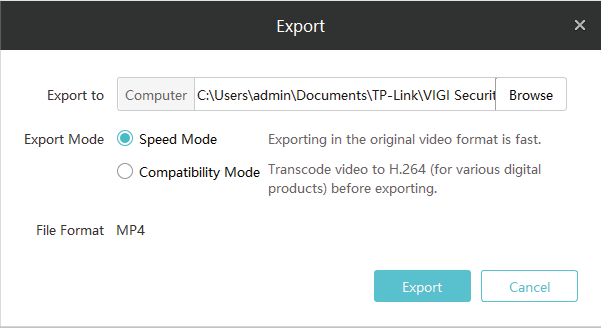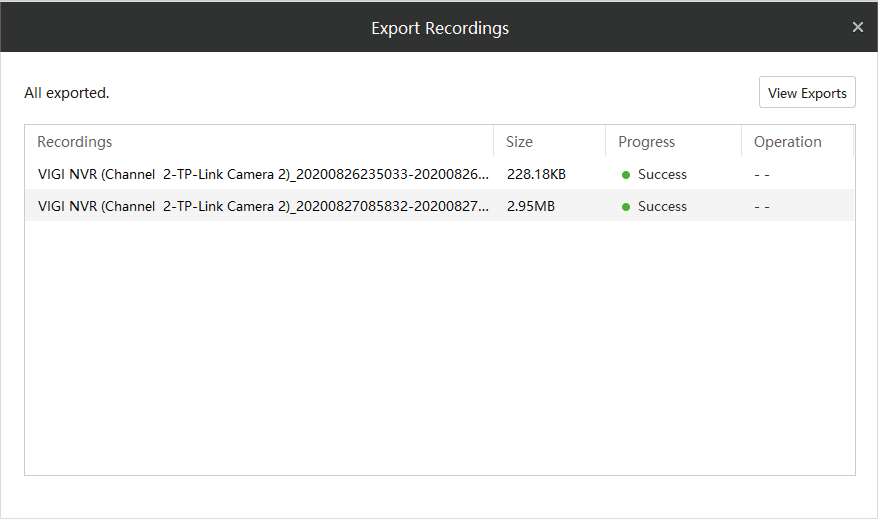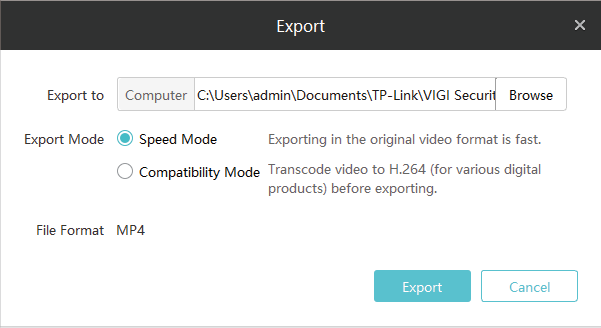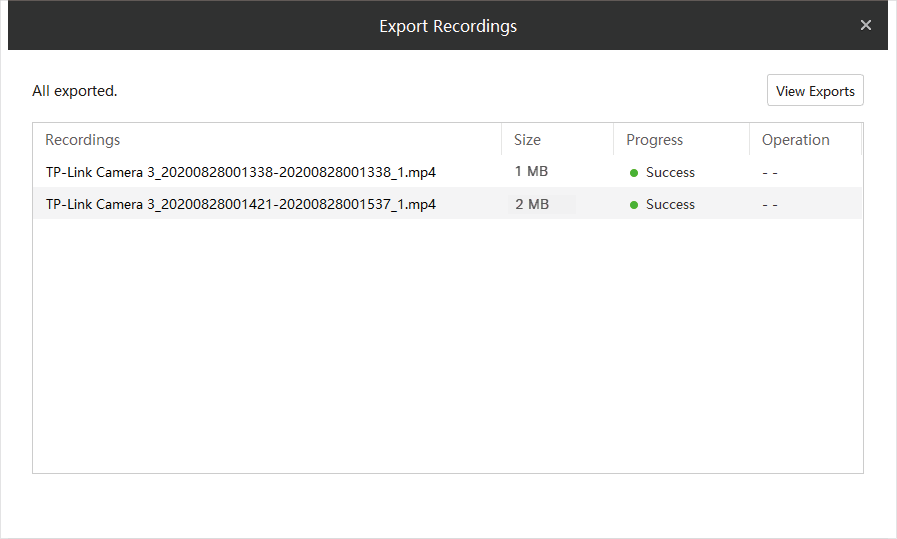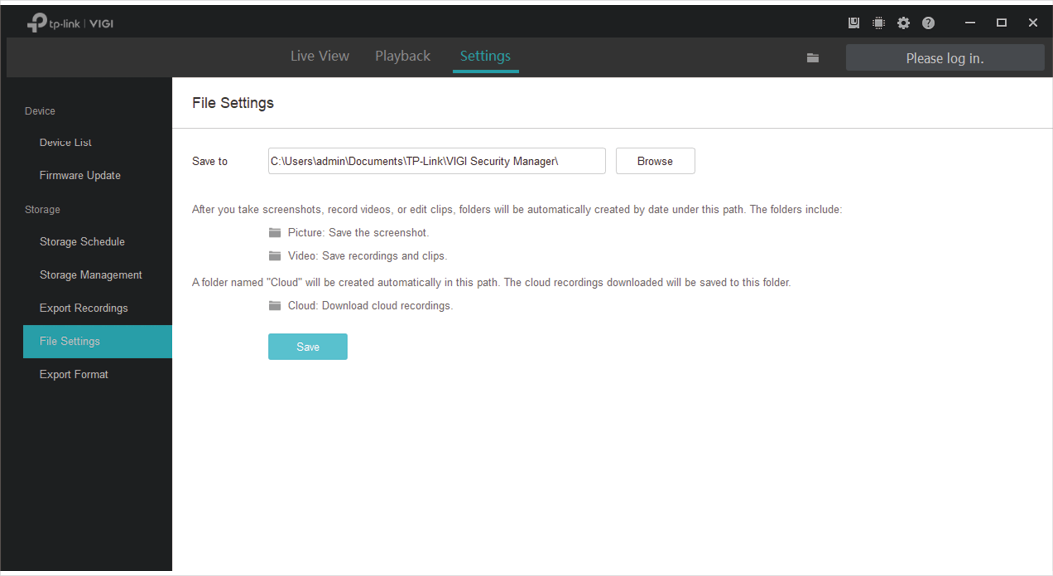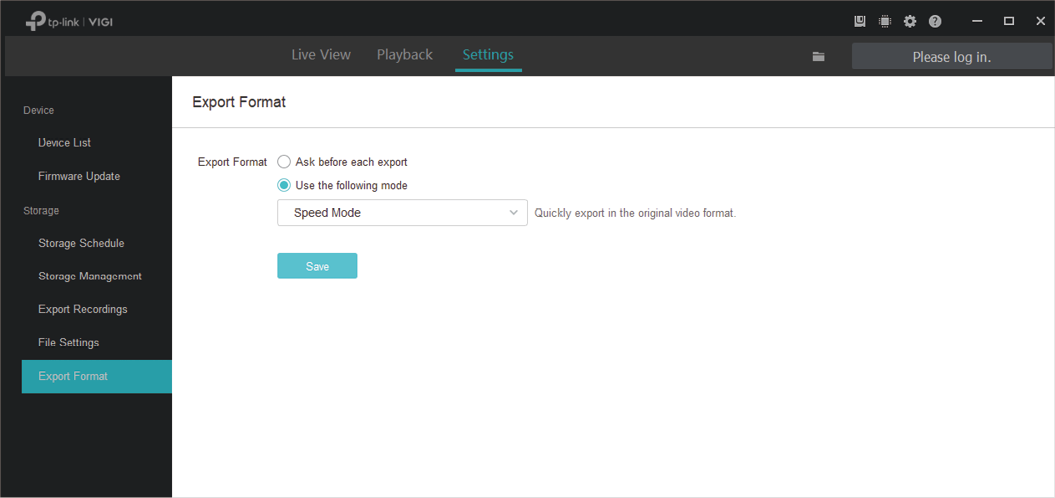VIGI Security Manager User Guide
This chapter guides you on how to export recordings and configure recording and storage settings for your cameras. VIGI Security Manager allows you to set recording schedule templates and apply these templates to different cameras. You can also check and configure the storage settings for recordings and exported files. This chapter includes the following sections:
6. 1 Arrange Schedules for a Single Camera
Storage schedule section provides convenience and flexibility for the daily monitoring of your devices. You can enable and customize the recording schedule and storage settings for a single camera. Go to Settings > Storage Schedule to modify these settings.
Note: If you have logged in to your TP-Link ID, you can not arrange schedules for cameras. To modify these settings, log out of your TP-Link ID and manage devices locally .
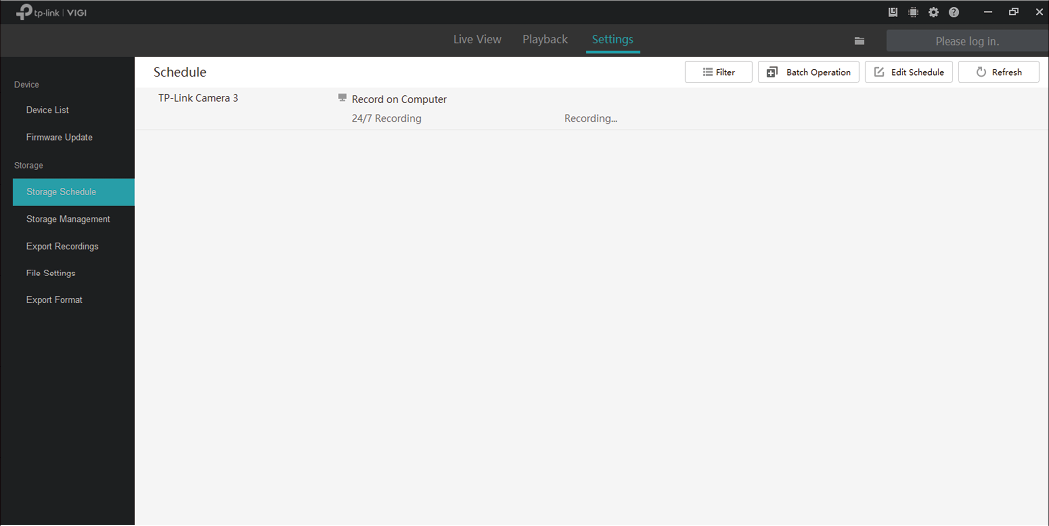
|
|
Record on Computer: Displays the cameras whose recordings are stored in the computer. Record on SD Card: Displays the cameras whose recordings are stored in the SD card. |
||||||||||||||||||||||||||||||||||||
|
|
|
|
|
|
6. 1. 1 Customize Schedule Template
Recording schedules include 4 fixed templates and 4 custom templates. In
Storage Schedule
, click
�? 24/7 Recording 24/7 Recording allows your camera to record continuously all the time.
�? 24/7 Motion Detection 24/7 Motion Detection allows your camera to record when motion detection is triggered.
�? 12h Weekday Recording 12h Weekday Recording allows your camera to record continuously from 8:00 to 20:00 on weekdays.
�? 24h Weekend Recording 24h Weekend Recording allows your camera to record continuously all day on weekends.
�? Custom Schedule You can customize the recording schedule according to your needs. For example, the camera will record based on a schedule of motion detection from 5:00-16:00 on weekdays; On weekends, the camera will record continuously from 1:30-23:00. Follow the steps below to finish the configuration. 1. Select a custom template (custom 1). 2. Click Motion Detection and drag the cursor on time bar to set 5:00 to 16:00 for continuous recording from Monday to Friday. The color of these rectangles will be changed to green. 3. Select Continuous Recording and drag the cursor to set 1:30 to 23:00 for motion detection recording on Saturday and Sunday. The color of these rectangles will be changed to blue. To enter the start and end time manually, click the time bar to select a rectangle first, then click the rectangle again. 4. Click Save .
6. 1. 2 Configure Storage Settings If you have not enabled recording function when adding the camera to VIGI Security Manager, follow the steps below to configure the storage settings. If you have already enabled this function, you can skip this section. 1. Click the camera you want from the list.
2.
Click
3. Set the storage and recording settings.
|





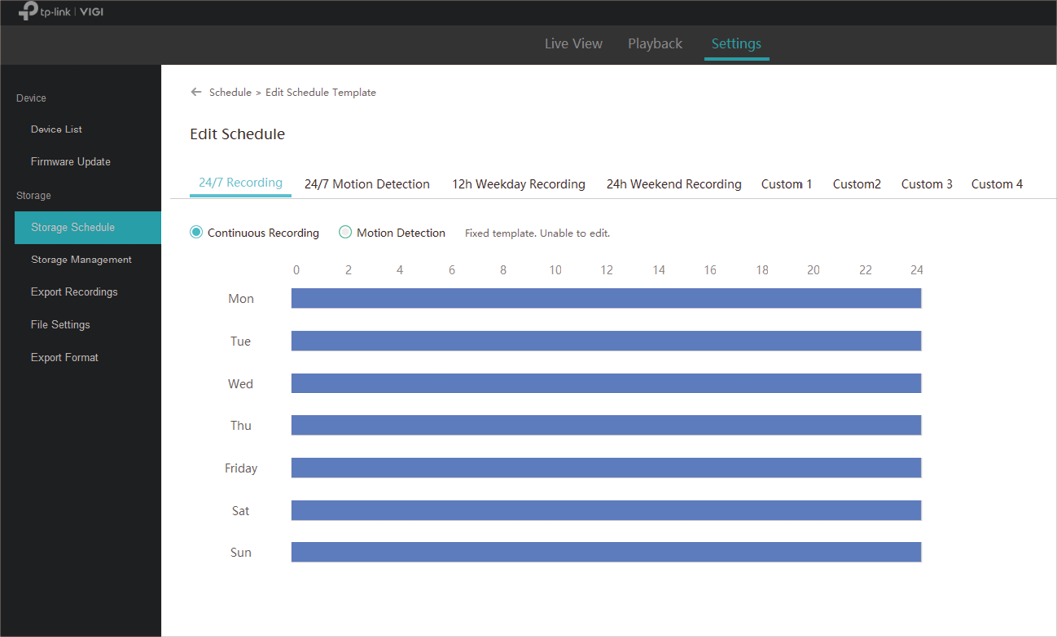
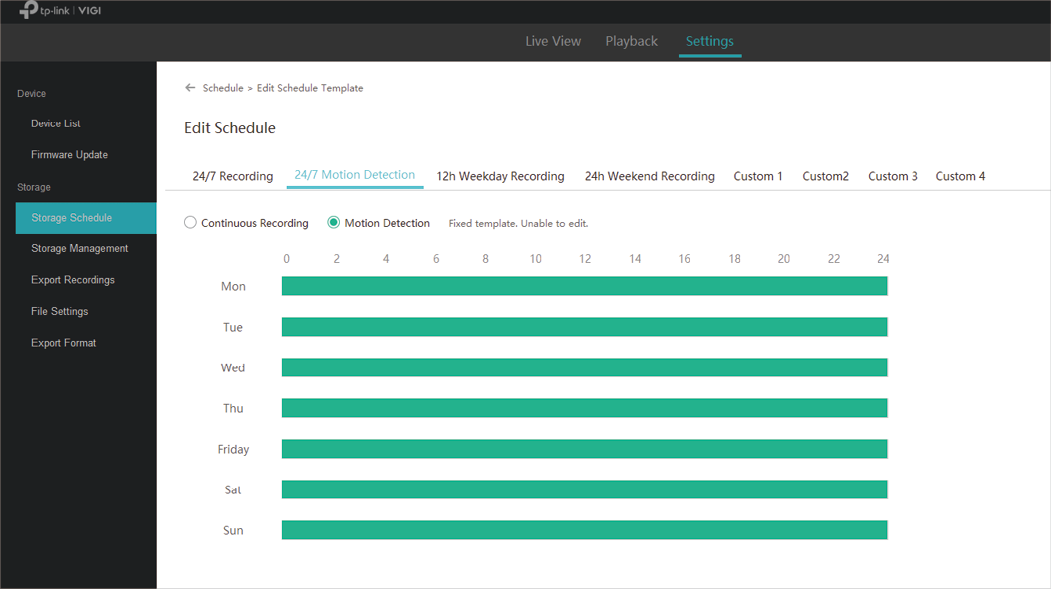
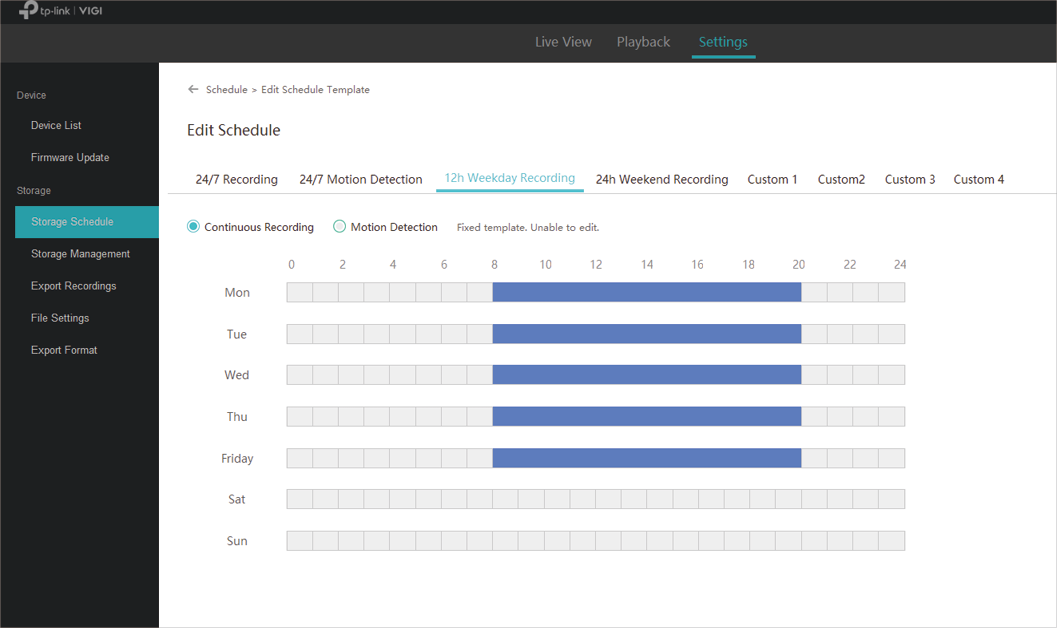
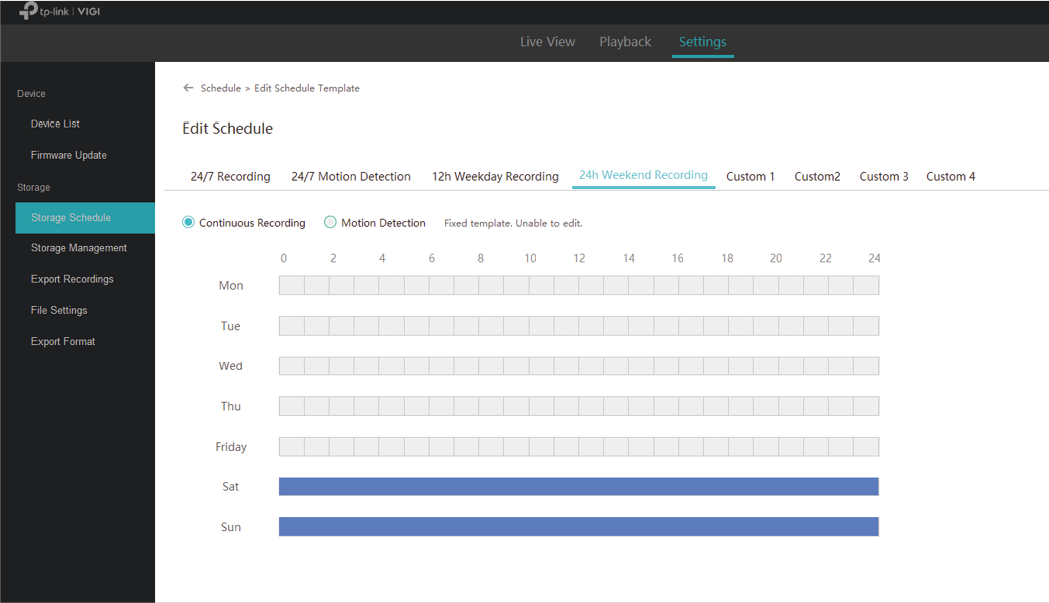
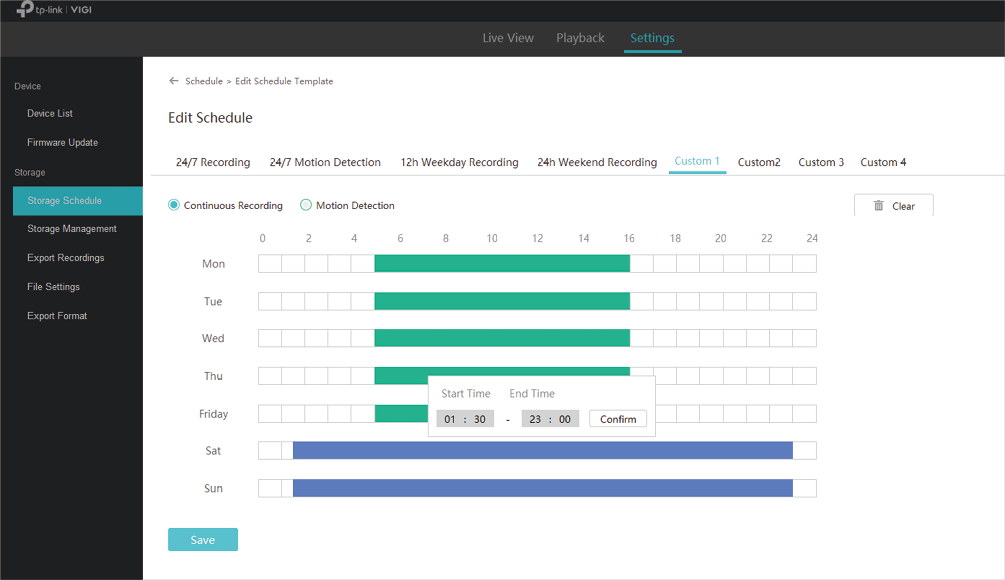
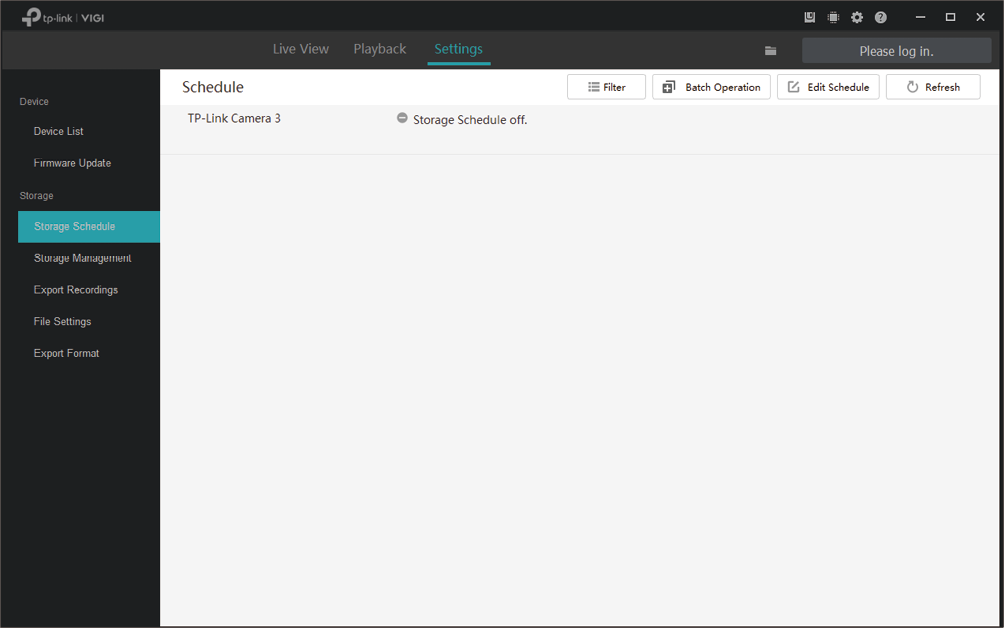
 to configure storage settings.
to configure storage settings.
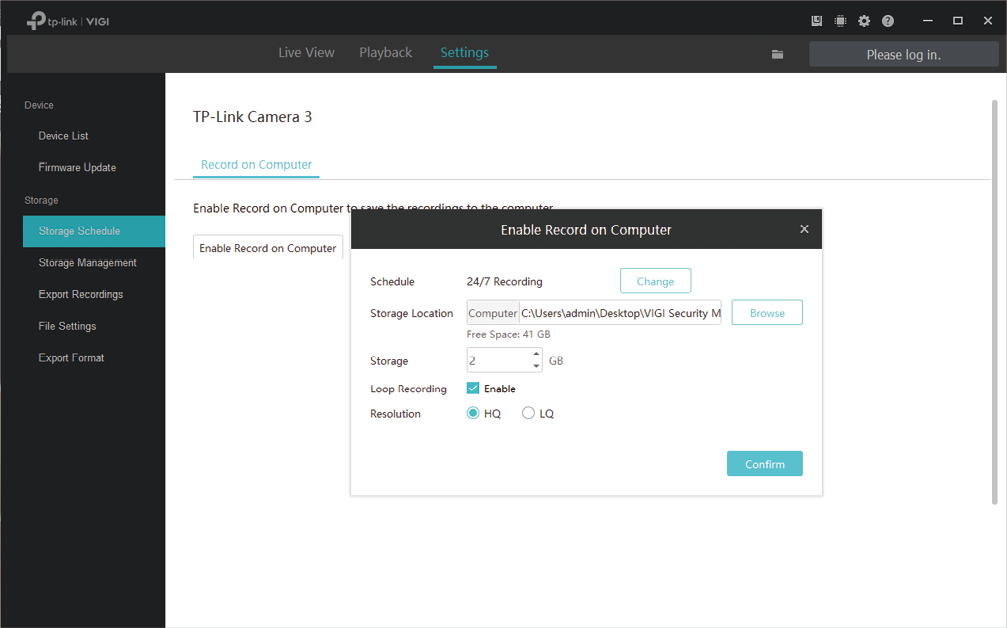
 to select the storage location of files.
to select the storage location of files.
 to select the schedule template according to your needs.
to select the schedule template according to your needs.
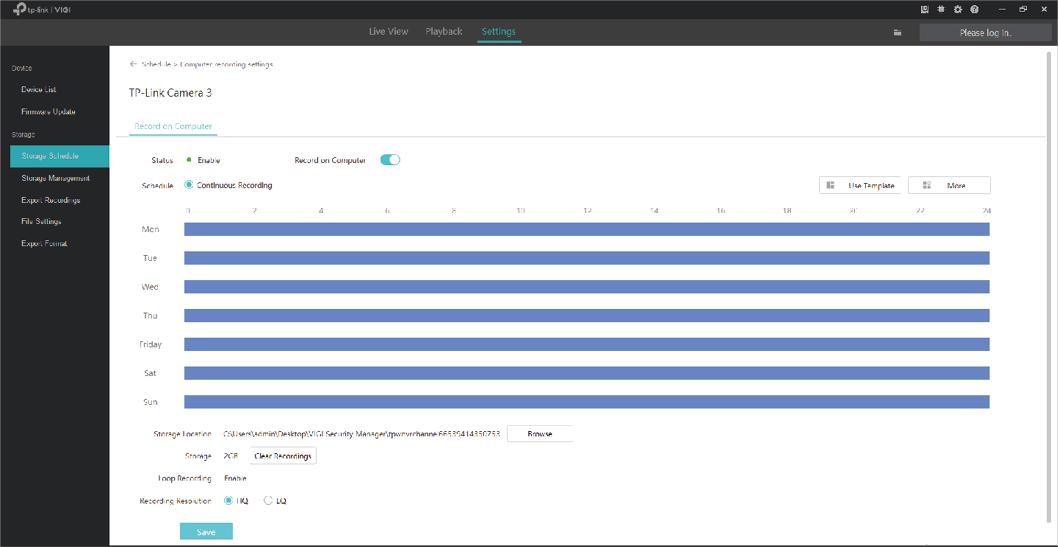
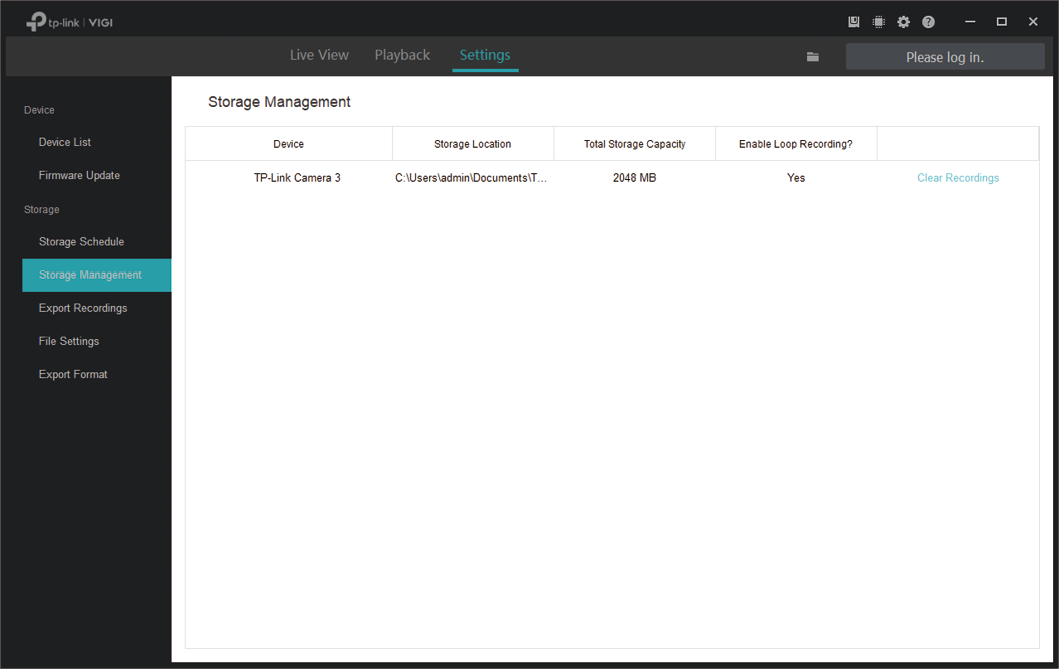

 .
.

